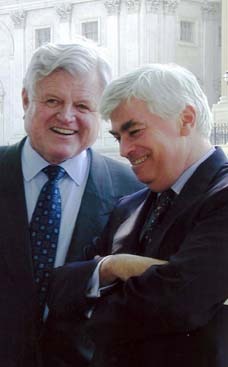
Sweet potatoes (Ipomoea batatas) are a member of the Convolvulaceae family whose best known relatives are bindweed and morning glory; and they are native to tropical Ecuador and Peru. The yam (Dioscorea species) is native to West Africa and is not grown in North America. Sweet potatoes are sweet in taste, most have moist orange flesh, high in beta carotene and require 90-150 days to produce storage roots depending on variety. Yams, on the other hand are, rough and scaly in appearance, feel dry to eat, low in beta carotene and take 180-360 days to mature. The first time I ever saw a yam was in West Africa. A farmer was walking along the road carrying what I thought was a small log for firewood. It must have been 4 feet long and 4 or 5 inches in diameter, and appeared to be covered with bark.
Belize RPCV Tom Hyden writes: The sweet potato has been a staple in the American diet for 200 years
Second popular question
Written by Tom Hyden
Wednesday, 03 March 2010 06:00
Caption: Yams? Sweet potatoes? Are Yams big sweet potatoes? by Victoria Reay Flickr Creative Commons Attribution 2.0 Generic
The second most popular question at the Socorro Farmers Market is this: "What's the difference between sweet potatoes and yams?"
Sweet potatoes and yams are not from related plant families.
Sweet potatoes (Ipomoea batatas) are a member of the Convolvulaceae family whose best known relatives are bindweed and morning glory; and they are native to tropical Ecuador and Peru. The yam (Dioscorea species) is native to West Africa and is not grown in North America.
Sweet potatoes are sweet in taste, most have moist orange flesh, high in beta carotene and require 90-150 days to produce storage roots depending on variety. Yams, on the other hand are, rough and scaly in appearance, feel dry to eat, low in beta carotene and take 180-360 days to mature.
The first time I ever saw a yam was in West Africa. A farmer was walking along the road carrying what I thought was a small log for firewood. It must have been 4 feet long and 4 or 5 inches in diameter, and appeared to be covered with bark.
The sweet potato has been a staple in the American diet for 200 years. In 1920, Americans ate 31 pounds per person. Now the average per capita consumption is only 4 pounds.
The Spanish found sweet potatoes in Peru and introduced them to their other colonies in Central America and the Caribbean. When African slaves were brought to the Caribbean islands, they found sweet potatoes and they may have been reminded of their native yams.
Another version of the story is that the word "yam" came from the West African Fulani word nyami (to eat). Or the name could have come from the Twi word anyinam, which refers to the true yam.
Traditional New Mexican culture knows the sweet potato as camote and that word comes from the Nahuatl (the language of the Aztec people) word camohtli.
The confusion that began in the 16th century has carried to the present. The first commercial varieties grown in the U.S. had "firm" light orange or tan flesh and they were marketed as sweet potatoes. When the softer, dark orange varieties began to be grown commercially, retailers decided to market them as a new product. Since those softer fleshed, orange sweet potatoes were already being called yams in the southern U.S., the name stuck.
Today, the U.S. Department of Agriculture requires labels with the term "yam" to be accompanied by the term "sweet potato." So, the bottom line is this: there are no yams in the grocery store, only sweet potatoes masquerading as yams. To find true yams, go to an international market or Asian or West African grocery.
Sweet potatoes do very well in poor soil. They have very few natural enemies and so require no spraying and very little fertilizer. They do very well with our intense heat and abundant sunlight and are tolerant of our alkaline soil and water.
Sweet potatoes are started not from seeds or "eyes" but from slips. A sweet potato sitting in a jar of water on the window sill will, after a few weeks or a month, begin to grow vines or slips. When these are clipped off and planted, they grow and produce potatoes.
Sweet potatoes are very sensitive to frost so I wait until early May to plant. Most varieties need 100-120 days to grow good-sized roots. Planting around June 1 would not be too late. The longer that you let the plants grow, the bigger the potatoes will be.
The hardest part of growing sweet potatoes is the digging. Our heavy clay soil hangs on to the roots and won't let the potatoes go. A spading fork works best for me. Most of the potatoes will be clustered immediately below the stem in a cone-shaped arrangement. However, you'll find rebels and outcasts growing up to a foot from the central core.
Once your potatoes are out of the ground they need to dry or "cure" for several days out of the sun and with high humidity. When properly cured and stored by late September in a cool dry place, sweet potatoes will keep for several months and you can make sweet potato pies all winter.
Hyden began his gardening career at age 8 in order to win a Cub Scout badge. Since then, he has been a school teacher, served five years in the Peace Corps, survived earning a master's degree, and is still in search of the perfect tomato and rhubarb in the desert. He and his wife, Robyn Harrison, live on a farm between Luis Lopez and San Antonio, N.M.












